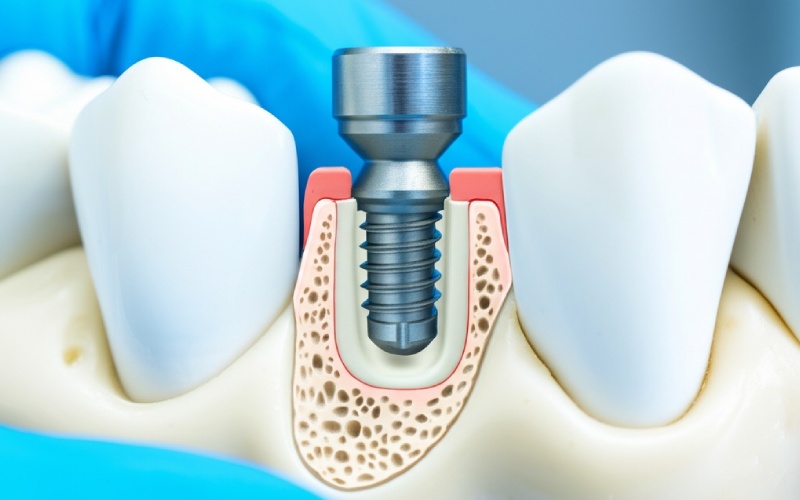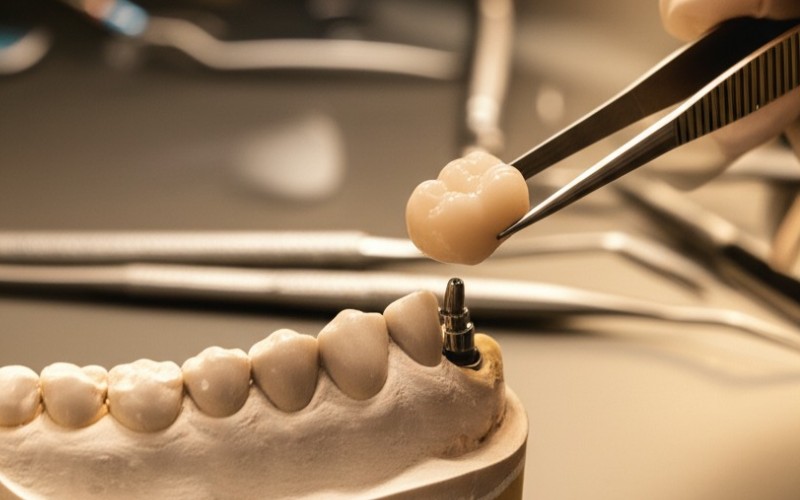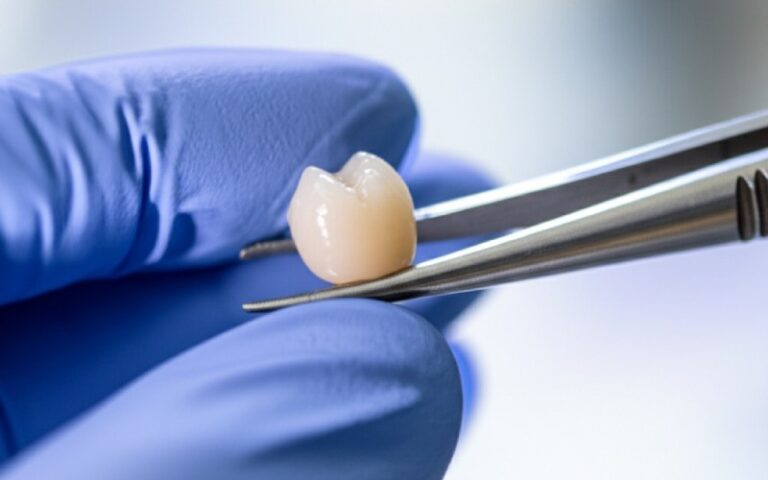
Votre guide sur les transferts d'empreinte : un élément clé de votre parcours d'implant dentaire
If you are getting a implant dentaire, you need to know what an impression coping is. This article is your simple guide to impression copings. I will explain what an impression coping is, why it is so important for your new tooth, and how it works. Knowing this will help you feel more sure about your dental implant process. You will understand what your dentist is doing and why.
Table des matières
What Is an Impression Coping, Exactly?
An impression coping is a small, special piece that a dentist screws into your dental implant. Think of it like a tiny handle. Its only job is to show the exact spot and angle of your implant inside your mouth. When your dentist makes a mold, or impression, of your teeth, this impression coping gets recorded in that mold. This is a very important step in the dental implant process.
Imagine you want to hang a picture on a wall, but you need someone else to drill the hole for the hook. You would put a small sticker on the wall to mark the exact position. The impression coping is like that sticker. It marks the spot for your future tooth. This little dental component ensures that the new tooth, or restoration, will fit perfectly onto your implant. Without a good impression coping, the lab would be guessing where to build your new tooth. The impression coping is a key part of modern implant dentistry.
Pourquoi une empreinte précise est-elle si essentielle pour mon implant ?
You might wonder why we talk so much about one little impression. The reason is simple: everything depends on it. A perfect impression leads to a perfect restoration. A bad impression leads to a new tooth that does not fit right. It might feel loose, look wrong, or cause problems when you chew. The goal of any implant restoration is for it to feel just like your own tooth. That can only happen if the impression is perfect.
The impression that your dentist takes is a map for the laboratoire dentaire. This map shows not just the implant but also the gums, or soft tissue, and the adjacent teeth. It records everything needed to build your new crown or dentier. An accurate impression, made using an impression coping, captures the unique position and orientation of your implant. This is the first step in making a beautiful and strong final restoration. The success of your dental implant starts with a great impression.

What Are the Main Types of Impression Copings?
Now, let’s talk about the different kinds of these parts. There are two main types of impression copings. The choice between them often depends on where the implant is in your mouth and your dentist’s preference. The two types are called the open tray impression coping and the closed tray impression coping. Both are used to do the same job: transfer the implant positions from your mouth to a model.
The main difference is how the impression coping comes out of your mouth. With one type, it stays in the impression material. With the other, it stays in your mouth and is moved to the impression later. Both methods work well when done right. Different implant systems may offer both types. The dentist chooses the best one based on the complexity of the case, for example, if you have one implant or multiple implants. An impression coping is a great tool.
How Do We Make Impressions With an Open Tray Impression Coping?
The open tray technique is very direct. For this method, the dentist uses a special impression tray with a hole cut in it. This is called an open tray. The open tray impression coping is usually long. It is so long that it will stick out through the opening in the tray once the tray is in your mouth. This lets the dentist see and touch the top of the impression coping.
Here is how it works. After the impression material is placed in the tray and around the impression coping, the dentist waits for it to get hard. Once the material sets, the dentist can reach through the opening in the tray and unscrew the retaining screw that holds the impression coping to the implant. Now, when the dentist is removing the impression, the open tray impression coping comes out with it, stuck perfectly within the impression material. This open tray impression gives a very clear record of the implant’s location. The whole process of using an impression coping this way is very precise.
What About Taking Impressions With a Closed Tray Impression Coping?
The other method uses a closed tray. A closed tray is a normal impression tray with no holes. This method is often seen as simpler for some situations. The dentist screws a shorter closed tray impression coping onto the implant. This impression coping does not stick out of the tray. Sometimes, a plastic cap, called a transfer cap is placed over the impression coping.
When taking the impression with this method, the impression material flows all around the closed tray impression coping. When the impression is removed from the patient’s mouth, the coping remains in the mouth, still attached to the implant. The dentist must then unscrew the impression coping from the implant. Then, it is carefully placed back into the dent it made in the impression. To do this right, you must confirm that the impression coping is seated perfectly. This closed tray impression technique is very common in implant dentistry.
What Materials Are Used for Taking These Impressions?
To get a great impression, you need great materials used for the job. The impression material itself is a special kind of putty or goo. It is soft when it goes in your mouth but gets firm in a few minutes. There are often two types of impression material used together. A thin, runny one, called light-body, is squirted right around the impression coping to capture all the fine details of your soft tissue.
Then, a thick putty, called heavy-body, fills the rest of the tray. This thick impression material pushes the thin material into all the right spots. It also gives the impression its strength. As for the impression coping itself, these copings are typically made from strong materials. They are often made of titanium or a titanium alloy, just like the dental implant itself. This ensures they are strong and precise. The right impression material is key for a successful impression.
What Is an Implant Analog and What Are Other Related Products?
Once the impression is made, we need more related products to build the new tooth. The most important one is called an implant analog. An implant analog is a metal copy of the top part of your implant. Think of it as a stand-in for your real implant. After the impression is taken, this analog is attached to the bottom of the impression coping that is now stuck in the impression material.
The implant analog is a critical part. The whole mold is then sent to the dental laboratory. The lab technician pours liquid stone into the impression. This stone hardens around the analog, creating a perfect model of your jaw. This model is called a master cast. The implant analog sits inside this stone cast in the exact same spot as your real implant in your mouth. The lab now has a perfect copy to work on, thanks to the impression coping and the analog. The final prosthetic will be built on this.
Can You Show Me the Step-by-Step Process?
Of course. Seeing the process step-by-step makes it much easier to understand. Here is a simple breakdown of taking impressions for a dental implant.
- Prepare the Implant: First, the dentist removes the healing cap from your implant and makes sure the area is clean.
- Place the Impression Coping: The dentist then screws the chosen impression coping (either open tray or closed tray) onto the implant. They make sure it is tight.
- Take the Impression: An impression tray is filled with impression material. This tray is placed in your mouth over the impression coping and your other teeth. You will bite down for a few minutes while the material sets.
- Remove the Impression: This is where the methods differ. For an open tray impression, the coping is unscrewed through the tray before the impression is removed. For a closed tray impression, the tray is removed first, and then the impression coping is unscrewed from the implant and placed into the impression.
- Attach the Implant Analog: The dentist or a lab tech then screws an implant analog onto the end of the impression coping. Now the impression is ready for the next step of fabrication.
What Happens After Taking the Impression of My Implant?
After your dentist has a perfect impression, the real magic begins. This impression, with the impression coping and implant analog attached, is carefully packed and sent to the dental laboratory. There, skilled technicians get to work. Their first job is to create the master cast. This is the stone model of your mouth that I mentioned earlier. This master cast is the foundation for your new tooth.
On this model, the lab will fabricate all the parts for your new restoration. This includes the abutment, which is the piece that connects the implant to the new tooth. Then, they will fabricate the final restoration itself, like a crown or a bridge for your denture. This whole fabrication process can take a couple of weeks. Because the impression coping was used, the lab knows the orientation of the implant perfectly. This ensures all the parts of the implant restoration will fit together correctly for the crown installation. This is how we make great dental restorations.

How Can This Knowledge Elevate Your Dental Health?
An informed patient is a happy patient. When you understand the “why” behind each step, the entire dental implant journey feels less scary. Knowing about the impression coping helps you see that implant dentistry is a science of great precision. You now know that this small dental component used to make an impression is vital for the success of your implant-supported restorations, such as crowns and dentures.
When you know about the impression coping, the implant analog, and the master cast, you can have better talks with dental professionals. You can ask good questions. You will feel a part of the team working to give you a new smile. This knowledge helps you appreciate the skill it takes to create a perfect prosthetic tooth. So, the next time you are in the chair for an impression, you will know exactly what that little impression coping is doing. This will help you elevate your dental experience and feel confident in your dental implant restorations. It’s all about making a perfect restoration.
Ce qu'il faut retenir
- An impression coping is a small piece screwed onto your implant to make a perfect mold.
- The impression it helps create is a map used by the lab to build your new tooth, or restoration.
- There are two main types: the open tray impression coping and the closed tray impression coping.
- An implant analog is a copy of your implant that is placed into the impression to create a stone model called a master cast.
- A good impression is the most important first step to getting a final restoration, like a crown or denture, that fits perfectly.
- Understanding this process helps you have better talks with your dentist about your implant restoration.




